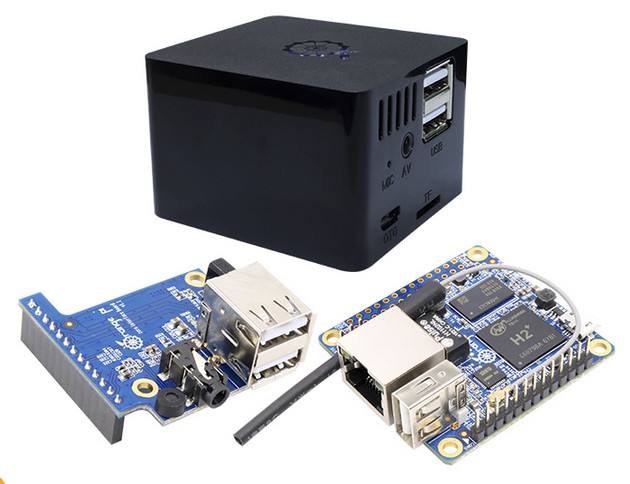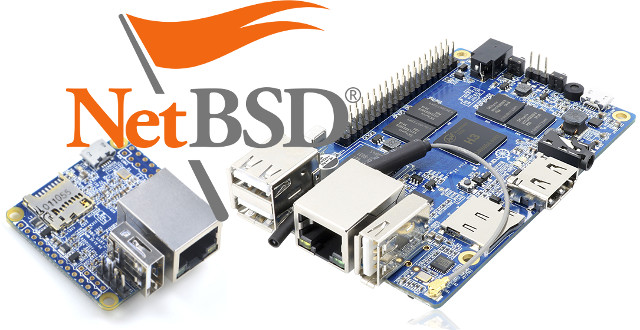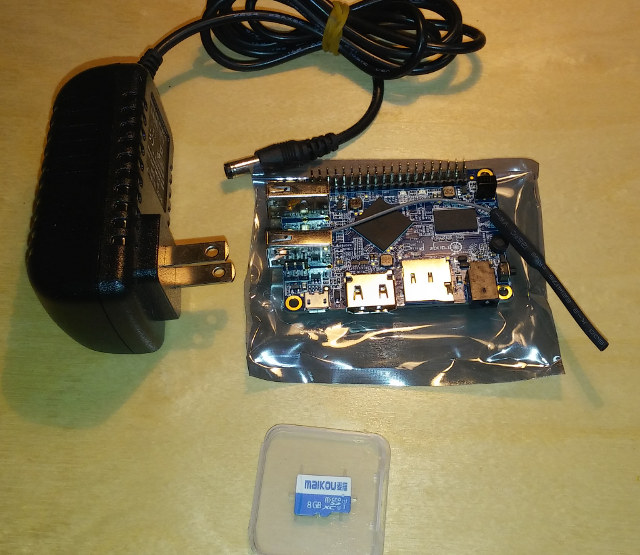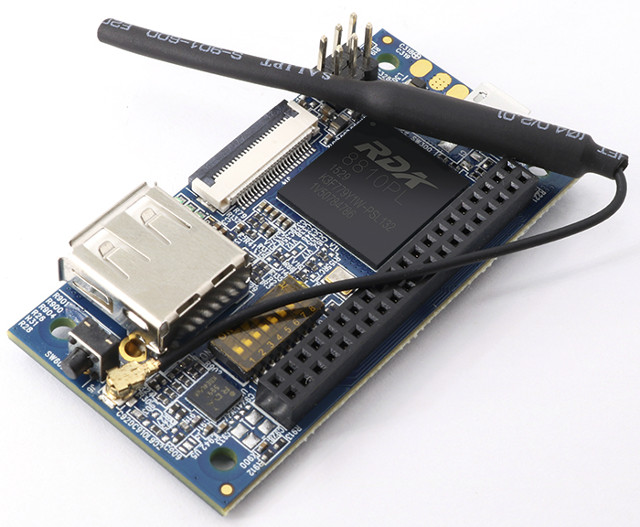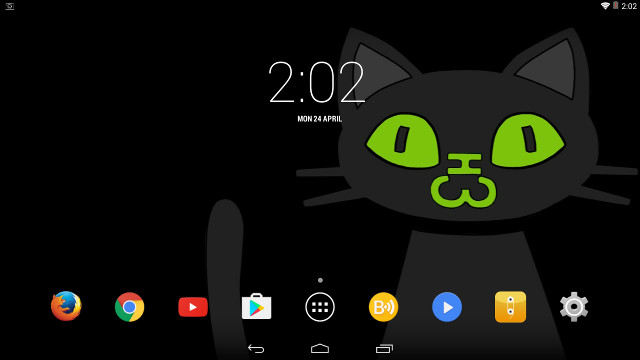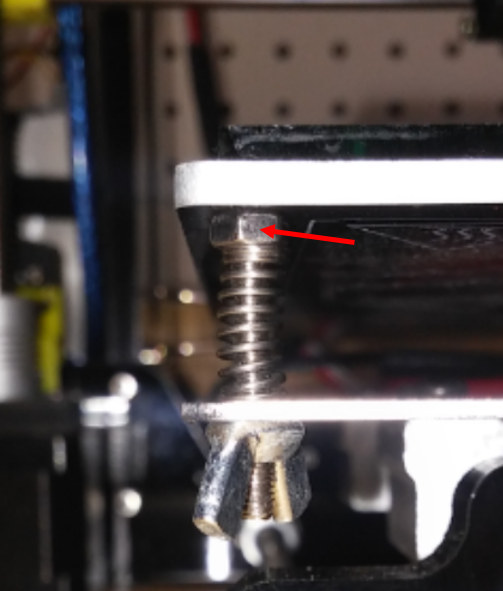Parts of the article have been updated after Steven Zhao update at the end. Since Steven Zhao is the only one contact person at Shenzhen Xunlong Software, the maker of Orange Pi boards, and the company appears to be focusing on hardware development more than on software and documentation, so at one point in time, people were speculating that it could be one person operation 🙂 Last year, Steven told us there were over 10 persons working in the office. But hey, photos, or it’s fake! We now have a definite proof as Renaud Coustellier visited Steven Zhao in his Shenzhen Offices, and published a report on Minimachines (in French). I’ll provide a summary below, but visit Minimachines website, if you want the full story and more pictures. First, Shenzhen Xunlong rented a floor, or part of it, in one of the many Shenzhen office buildings, and engineers are working […]
$13 Orange Pi Zero Set 6 Kit Could Make an Inexpensive DIY Google Home Alternative
Since Google released the Google Assistant SDK for Raspberry Pi 3, and other ARMv7 boards, I thought I should it try myself on one of the tiny headless boards I have, as you just need audio output and a microphone. I first planed to use NanoPi NEO board with NanoHAT PCM5102A audio board, a cheap USB microphone, and pair of speakers, but this morning, I’ve come across Orange Pi Zero Set 6 kit that looks perfect for this applications and sells for just $12.95 plus shipping ($18.27 in total for me) with Orange Pi Zero board, Orange Pi Zero interface board, and a case. Orange Pi Zero board is powered by Allwinner H2+ quad core Cortex A7 processor with 512MB RAM, and can run the required Ubuntu/Debian distribution using one of the Armbian images, and connected to the Internet over Ethernet or WiFi, however if you want to use the […]
NetBSD is Now Running on Allwinner H3 Boards
Most people will run Linux kernel on development boards because it does the job, and that’s usually the only option. But others have been working on NetBSD kernel for Allwinner H3 boards, and it’s now running on various H3 boards with serial console, USB, Ethernet, SD card, and eMMC flash working. Jared McNeill explains they first had to deal with low-level code to initialize the CPU and MMU, before using a U-boot layer to disguise NetBSD as the Linux kernel in order to load kernel and device tree file. The code then jumps to the generic ARM FDT implementation of initarm to relocate DTB data and perform other steps, and finally they can enumerated devices. This is explained in greater details in the aforelinked blog post on NetBSD website. Jared tested the implementation on NanoPi NEO and Orange Pi Plus 2E, but others have reported success on various hardware based […]
How to Use Octoprint on Orange Pi Lite Board, Amlogic S905X and S912 TV Boxes
Karl here. This was article originally going to be how to setup Octoprint 3D printer server on an Orange Pi Lite. But after looking and running through the instructions it seemed like it would be too much so I created an img to simplify things. I also explored running Octoprint on an Amlogic S905x or S912 device and it turned out to be an even better solution. You get a case, power supply, and eMMC flash storage. What is Octoprint? I use Octoprint mainly for its ability to start and stop prints without having to use an sd card. Time lapse is also a nice feature. And one last thing is that I setup a pushbullet notification when it is complete. For a full list of features check out http://octoprint.org/. What is needed? Orange Pi Lite board provided by GearBest for the article, or an Amlogic S905X or S912 Android […]
Linux 4.12 Release – Main Changes, ARM & MIPS Architectures
Linus Torvalds has just released Linux 4.12: Things were quite calm this week, so I really didn’t have any real reason to delay the 4.12 release. As mentioned over the various rc announcements, 4.12 is one of the bigger releases historically, and I think only 4.9 ends up having had more commits. And 4.9 was big at least partly because Greg announced it was an LTS kernel. But 4.12 is just plain big. There’s also nothing particularly odd going on in the tree – it’s all just normal development, just more of it that usual. The shortlog below is obviously just the minor changes since rc7 – the whole 4.12 shortlog is much too large to post. In the diff department, 4.12 is also very big, although the reason there isn’t just that there’s a lot of development, we have the added bulk of a lot of new header files […]
Orange Pi i96 96Boards IoT Edition WiFi & Bluetooth Development Board Finally Launched for $8.80
Orange Pi i96 board was first unveiled at Linaro Connect US 2016 in September of that year, as one of the first boards compliant with 96Boards IoT Edition specification, and expected to sell for just $9.99. The good news is that the board is now finally available for $8.80 plus shipping on Aliexpress ($12.19 in total in my case) Orange Pi i96 specifications: SoC – RDA Micro 8810PL ARM Cortex A5 processor @ up to 1.0 GHz with 2Gbit (256 MB) on-chip LPDDR2 RAM, 4Gbit (512 MB) on-chip SLC NAND flash , 256KB L2 cache, and Vivante GC860 3D GPU External Storage – micro SD slot Connectivity – WiFi 802.11 b/g/n + Bluetooth 2.1/EDR module (RDA5991) Camera – MIPI CSI-2 connector for camera sensor up to 5MP Video – 1080p30 H.264 encoding USB – 1x USB host port, 1x micro USB OTG port Expansion – 40-pin GPIO header with SPI, […]
H3Droid Android Firmware is Designed for Allwinner H3 Boards & Devices
Allwinner H3 boards such as Orange Pi PC and NanoPi NEO are mostly interesting due to their ability to run Linux and control I/Os, and while they also support Android, most people wanting to run Android are better served with TV boxes instead, as they come with enclosure, power supply, HDMI cable, and an IR remote control. That does not mean there’s no use case for Android on development boards, and that’s why probably KotCzarny, and other developers, have decided to work on H3Droid project to provide better Android images for Allwinner H3 boards and devices than the firmware released by manufacturers. Some of the improvements include “sane DRAM/CPU settings”, support for Custom recovery system, Google Play Store and more USB network adapters, as well as the removal of apps and feature unusable for people outside out China. You’ll also be able to access the board via SSH if you […]
Raiscube R2 (Prusa I3 Clone) 3D Printer Review – Part 2: 3D Print Samples, E3D Clone Installation, Tips & Tricks
Karl here with part 2 Exploring Raiscube R2. That is the official name by Raiscube. Gonna look at some more prints. Some mistakes I made in first part and some simple mods. Maybe not so much mistakes but an oversight. Oversight / Mistake So in the first part of Raiscube Prusa i3 review, I mentioned there were not very good instructions, and they sent a blank SD card with the kit. I was wrong. On first inspection, it looked like a factory sealed SD card but it is not. It is an 8 GB card with videos, instructions, pictures, parts list, STL, and gcode files as well as an old version of Cura. Not blank at all with about 1.5 GB of files. It didn’t include settings but if you install the latest Cura, it just takes a little tweaking to print well. Official specs from SD card Brand RAISCUBE […]



